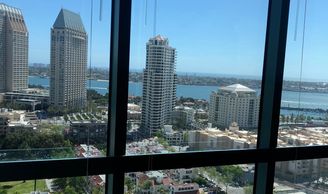The Brain’s Occipital Lobe
Brad Nakase, Attorney
Free Consultation: 619-550-1321
The occipital lobe can be found below the parietal lobe and on top of the temporal lobe. The occipital lobe is the smallest lobe that can be found in the brain, but it still has a lot of significant functions.
The primary function of this lobe is that it is the home of the visual cortex. The visual cortex not only allows you to see, but it also allows you to process what you are seeing. When processing what you are seeing, your brain can give meaning to what you see and remember.
Where can you Find the Occipital Lobe?
The cerebral cortex that forms the brain is the latest part of the brain in terms of development. All mammals, including humans, have four lobes of the brain that are located within the cerebral cortex. These four lobes include the frontal, parietal, occipital, and temporal lobes; each of these lobes have specific functions and reasons for being in the brain, though they are not all fully understood. In addition to this, the brain is also divided into left and right hemispheres. The occipital lobe is one of the lobes that is separated between both the left and right hemispheres of the brain.
Just as much of the rest of the brain, there are no clear boundaries that separate the occipital lobe from the other parts of the brain, so scientists that specialize in neurology use the bones of the skull as a guide.
The occipital lobe is the lobe that is the furthest back, resting inside of the forebrain. It can be found on top of the tentorium cerebelli, otherwise known as a tissue membrane, that functions as a separating factor between that and the older cerebellum.
What is the Function of the Occipital Lobe?
Much of the functions of the brain are unknown, so it can be difficult to differentiate the functions of the brain’s lobes. With that being said, there are some functions that are known to belong to the occipital lobe.
At one point in time, many people believed that the occipital lobe was only responsible for your visual functions, but some newer functions have recently been discovered. Some of these other functions include the ability to receive input from the other lobes of the brain. This is done through the dorsomedial stream specifically, and it allows the occipital lobe to receive any input regarding vision as well as other input. This leads researchers to believe that the occipital lobe can also be responsible for functions aside from just visual functions.
Aside from visual functions, some other primary functions of the occipital lobe include:
- Mapping out what you see (spatially and memorably)
- Visual recall (remembering what you have seen)
- Color determination
- Assessing for distance, depth, and size
- Identify faces and objects that are familiar
- Transfer information to other regions of the brain to assign meaning to them
- Receive data from the eye’s retinas
What is the Occipital Lobe Made of?
Each lobe consists of a variety of structures that contribute to the functionality of the lobe. Some of the structures found in the occipital lobe include:
- Brodmann Area 17: This area is otherwise referred to as V1 and is locates within the calcarine sulcus. It is the primary area for the visual cortex and through this, it helps to assess location, spaces, and color.
- Ventral Stream: This area is otherwise referred to as V2 and it is another visual cortex that provides for you to give meaning to the things you see. Without this area, you could still see, but you wouldn’t be able to understand what you are seeing.
- Dorsomedial Stream: This region is one of the least-understood in the occipital lobe. It is known that it is connected to V1 and V2 but not much beyond that.
- Lateral Geniculate Bodies: Such various structures allow your brain to take in information from the retinas and transfer this information to the visual cortexes.
- Lingula: This region is responsible for gathering information from inferior retinas to understand what is being said more.
In What Ways Does the Occipital Lobe Work with the Rest of the Body?
Not a single portion of the brain can function on its own. Instead, each section of the brain works in coordination with the other lobes of the brain as well as the rest of the body. The occipital lobe is no outlier to this rule. Although it is primarily in charge of the visual information and functions, damage to any other region of the brain can also result in damage to vision. The occipital lobe works the most with the following:
- The eyes: to process the information you see, the information is sent from the eyes and retinas to the occipital lobe
- The frontal lobe: the frontal lobe contains the motor cortex which allows the eyes to move and analyze what is being seen
- The temporal lobe: the temporal lobe helps to give meaning to what is being seen as well as storing it into your memories
What Happens if you Damage the Occipital Lobe?
The biggest repercussion that can occur if the occipital lobe is damaged is blindness or partial blindness, but this can also result in:
- Epilepsy (seizures due to lights)
- Movement Difficulties
- Difficulty in perceiving colors and shapes
- Difficulty recognizing things as familiar
- Experiencing Hallucinations
- Cannot recognize or read words
- Inability to see if something is moving
- Difficulty in locating objects
- Difficulty with motor skills
If you or someone you love suffered a brain injury after an accident that is someone’s fault, please call our personal injury lawyer, Brad Nakase, for a free consultation about getting compensation for treatment, recovery, and assistive living. 619-550-1321






